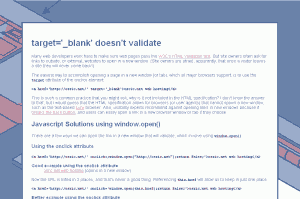I was recently trying to get a Sencha Touch demo up-and-running, but my callback functions after requests for JSON data never ran, and Firefox would throw errors along the lines of “invalid label.” I didn’t understand why–until I read more about JSONP.
JSONP prefixes your JSON response with a function name, which runs when the response is retrieved. It’s a way of handling the data without a listener.
This means that your JSONP provider needs to detect a JSONP parameter, and then wrap or “pad” the response within the specified parameter value.
For Sencha Touch, the JSON returned should be wrapped in Ext.util.JSONP.callback();. If your JSON looks like this:
{"results":[{"name":"Chris"},{"name","Harry"}]}
then your JSONP should look like this:
Ext.util.JSONP.callback({"results":[{"name":"Chris"},{"name","Harry"}]});
Not that you should hard-code that function name anywhere in your JSON output–web-based APIs and services should pick up the function from your request and wrap the JSON for you. For example, the twitter search API accepts a callback querystring parameter.
http://search.twitter.com/search.json?q=fakecriterions&callback=myCallbackFunction
would wrap the JSON response inside
myCallbackFunction();
I ignored the extra letter in the acronym at my own peril–I figured it was just a trivial variation on JSON (which it is) that wouldn’t make any difference in how it was handled (but it does).
